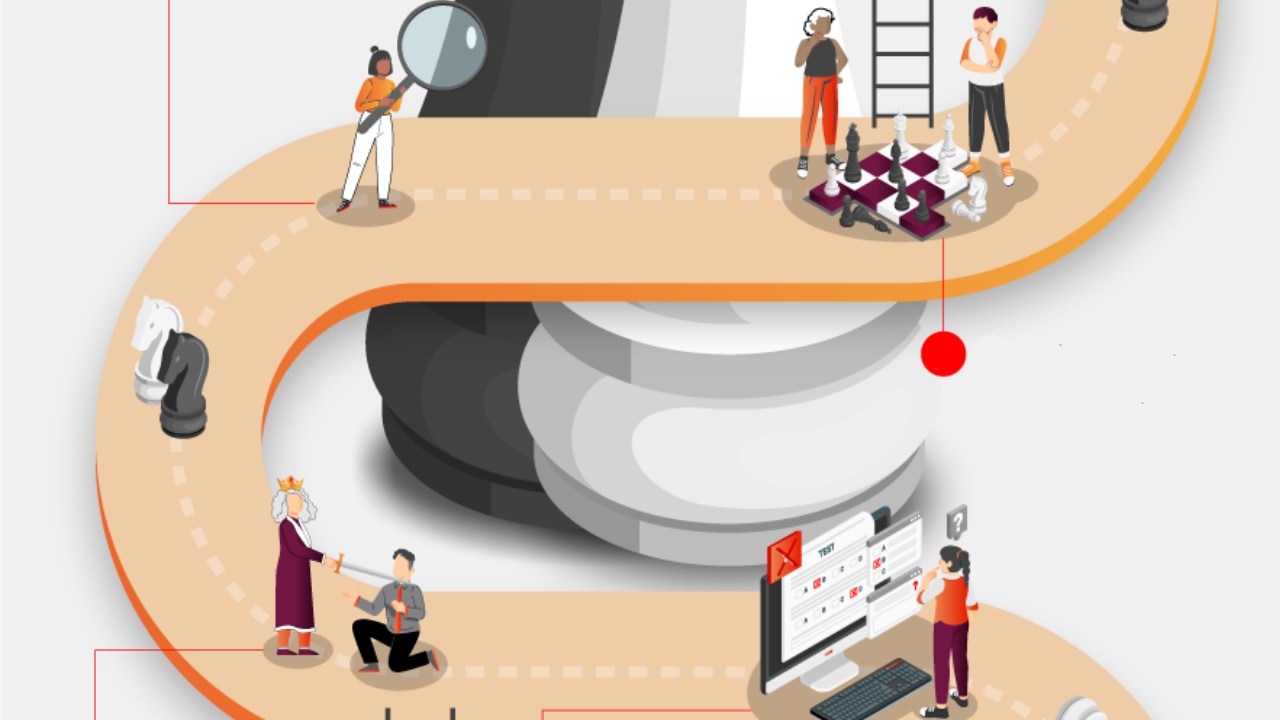Are leaders born or made? The experts are clear: a little bit of both. Leadership identity is an intriguing journey of exploration, like a jigsaw puzzle being put together bit by bit. As leaders assume their roles and gain recognition from those they lead, the pieces fall into place.
What are those pieces? Interestingly, a new study from the State University of New York, reported in The Oxford Review, highlights certain processes that lead to the configuration of the leader. Let’s explain them.
What will I read about in this article?
When we think of 21st century organisational leadership figures, what comes to mind?
No, we’re not talking about those tech giants or social media gurus. We’re talking about those people at the head of teams in any department in small, medium or large companies. People who are able to navigate the profound uncertainty of a changing world, while understanding the impact of their work and attitude on people’s well-being.
This is what Deloitte highlights when discussing the new leaders of Generation Z. Yes, these young digital natives are now working adults who demand a more open and empathetic leadership style from their superiors that keeps the team motivated and valued. This is significantly different from the baby boomers, who mainly expected discipline, authority and supervision from their leaders.
Today’s leaders focus on a work ethic based on collaboration, tolerance and innovation, with a focus on learning and growth to attract and retain Generation Z work talent. In addition, they are expected to be both flexible and honest, and willing to listen to the opinions of their team members.
Organisations have a critical role in developing the identity of their new leaders. They can do this through formal training that sets the desired standards and expectations for behaviour and leadership style. But to understand how today’s leaders relate to organisational culture, they may also do so by observing how others behave.
The truth is that the transition to leadership is a constant challenge. Those who fail to adopt their new identity within an acceptable timeframe may be penalised or eventually discarded. The results will depend as much on the context and the support found in their team and superiors as on the individual’s beliefs about power and influence.
A study by researchers at the State University of New York concluded that the identity of new leaders can develop through a series of personal and situational choices in the work environment. These processes include:
1. Personal perception of leadership
Each person has their own approaches to power and to what’s the most appropriate way to lead. These beliefs are determined by their individual values, attitudes and experiences.
For example, leaders focused on building community are guided by social responsibility rather than self-interest: they seek to empower team members through shared decision-making processes. In comparison, leaders who take a more authoritarian role use rewards or punishments as motivators of behaviour when necessary.
2. The perception of the organisational culture of leadership
Organisations that foster a culture of control can create dominant leaders, while those that promote empowerment and team building tend to develop community-oriented leadership styles.
3. Beliefs about power
New leaders’ personal beliefs about power often stem from their interactions with other leaders throughout their careers. In this sense, more power-centred leadership may develop as a strategy for building respect, trust and open two-way communication between them and their subordinates. Or, on the other hand, there may be leadership that understands power in a more authoritarian way that helps to establish a hierarchy through orders and one-way communication.
4. Ability to assess situations
Leadership is a balancing act between what the organisation needs and how leaders interpret those demands. It’s important for new managers to keep an open mind to determine when it is necessary to apply one leadership method or another.
5. Motivation to lead
Accepting a leadership role is also accepting more responsibilities and obligations. People take on leadership roles for many reasons: they may be driven by strong values and beliefs, by a sense of duty or by an emotional connection to their role. Those who choose leadership often find that it is deeply rewarding, despite the personal costs associated with the role.
6. Be willing to be wrong in order to learn
Leaders strive to hone and improve their skills, often trying different strategies to discover which are most beneficial. Through trial and error, they develop a personalised style that can help maximise effectiveness within the current work situation.
7. Tough hand or positive reinforcement?
As a leader, it’s important to recognise the power of reinforcement. By congratulating and celebrating successes with praise and positive feedback, you can foster an environment in which successful behaviours become part of the leader identity. Conversely, if you’re more about correcting or pointing out mistakes, it’ll be the failures that are more closely associated with your identity.
8. Open to change
When new leaders choose or develop their “style”, they tend to internalise it and make it part of their own identity. But it’s not static. Leaders’ identities must evolve over time, growing and adapting to the assessments they receive from those around them.
The concept of leadership has existed since time immemorial, but the way in which its identity is constructed has changed over the centuries. Today’s new leaders require strong communication skills, decisiveness, strategic planning and empathy.
There is no one-size-fits-all approach to becoming a leader; the leadership identity lies within each person. Having a clear understanding of what it takes to become one can help aspiring captains on the journey towards finding their true self as a leader.
